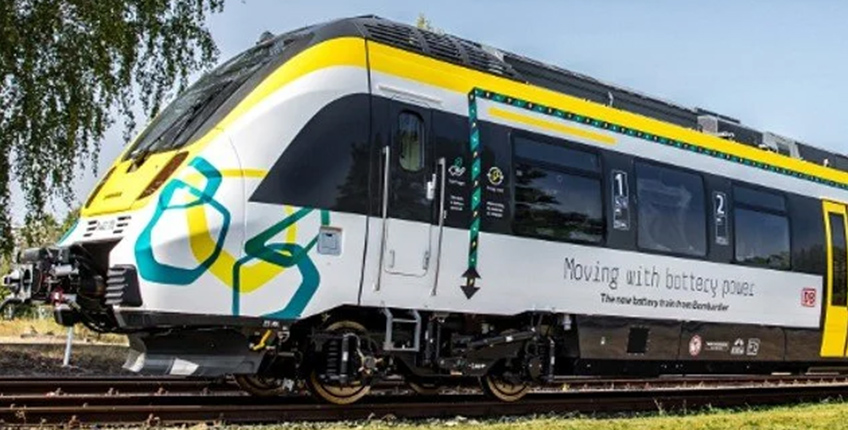BEMU stands for Battery Electrical Multiple Unit. From 2016 to 2023, the BEMU research consortium, comprised of Alstom Transportation Germany GmbH and the Technical University of Berlin, worked on converting a conventional electric multiple unit train into a battery multiple unit train and testing it in everyday operation.
The BEMU battery train carries an accumulator as an energy storage system. On track sections with overhead lines, the accumulator is charged via the pantograph. On non-electrified route sections, the train runs on battery power. The train is charged while operating via the overhead line or during turnaround times at electrified terminal stations.
The BEMU project was funded under the Electric Mobility funding guideline of the Federal Ministry for Digital and Transport (BMDV) in the amount of 5 million euros. The funding guideline was coordinated by NOW GmbH and implemented by Project Management Jülich (PtJ).
80 per cent of routes without overhead lines could be serviced by battery trains
As part of extensive scientific monitoring, the TU Berlin team conducted a potential analysis of regional rail passenger transport. The result: around 80% of regional lines operated with diesel in Germany are shorter than 90km and thus are already within the range capability of battery trains. In many cases, either only moderate or no investment in charging infrastructure is required.
BEMU saves 50 per cent CO2
An electrically-powered traction unit generates around 50 per cent fewer greenhouse gas emissions per kilometre than a diesel train and causes significantly lower noise emissions. If it runs entirely on green electricity, then up to 90 per cent of emissions can be avoided, including the upstream chain. Companies and passengers also benefit from the fact that there is no longer the need for a time-consuming changeover from electric to diesel trains in order to bridge non-electrified sections.
Subsequent use of the batteries
After use as a traction battery, the energy storage systems still have around 80% of their original capacity and can enter into a second life phase (second life), for example as stationary energy storage devices. At the end of their useful life, around 70% of the battery components can be recycled according to the latest technology, recovering up to 95% of rare elements such as cobalt, nickel and manganese.
Further information
In the Electric Mobility funding guideline of the BMDV, which has been running since 2015, 37 research and development projects have been funded to date.
More about the ‘Alternative drives in rail transport’ funding guideline: www.now-gmbh.de/foerderung/foerderprogramme/alternative-antriebe-im-schienenverkehr
Image: © Alstom


